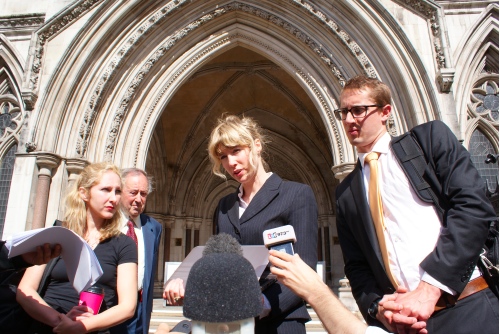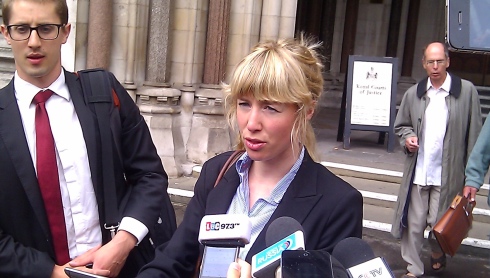David Miranda’s solicitor’s media statement
Following today’s short hearing of the injunction application adjourned from last week, David Miranda’s solicitor Gwendolen Morgan again gave a brief statement to what was a much smaller media pack. She explained the “pragmatic view” her client took by agreeing to let the injunction continue pending the substantive judicial review in a few weeks.
Clearly David Miranda and his lawyers concluded it would be hard for them to maintain the existing order if they went ahead with a contested application today, given the government evidence that’s been filed and which Gwendolen Morgan refers to. You’ll see from my previous post that I think the government’s likely to be pleased with the varied order.



